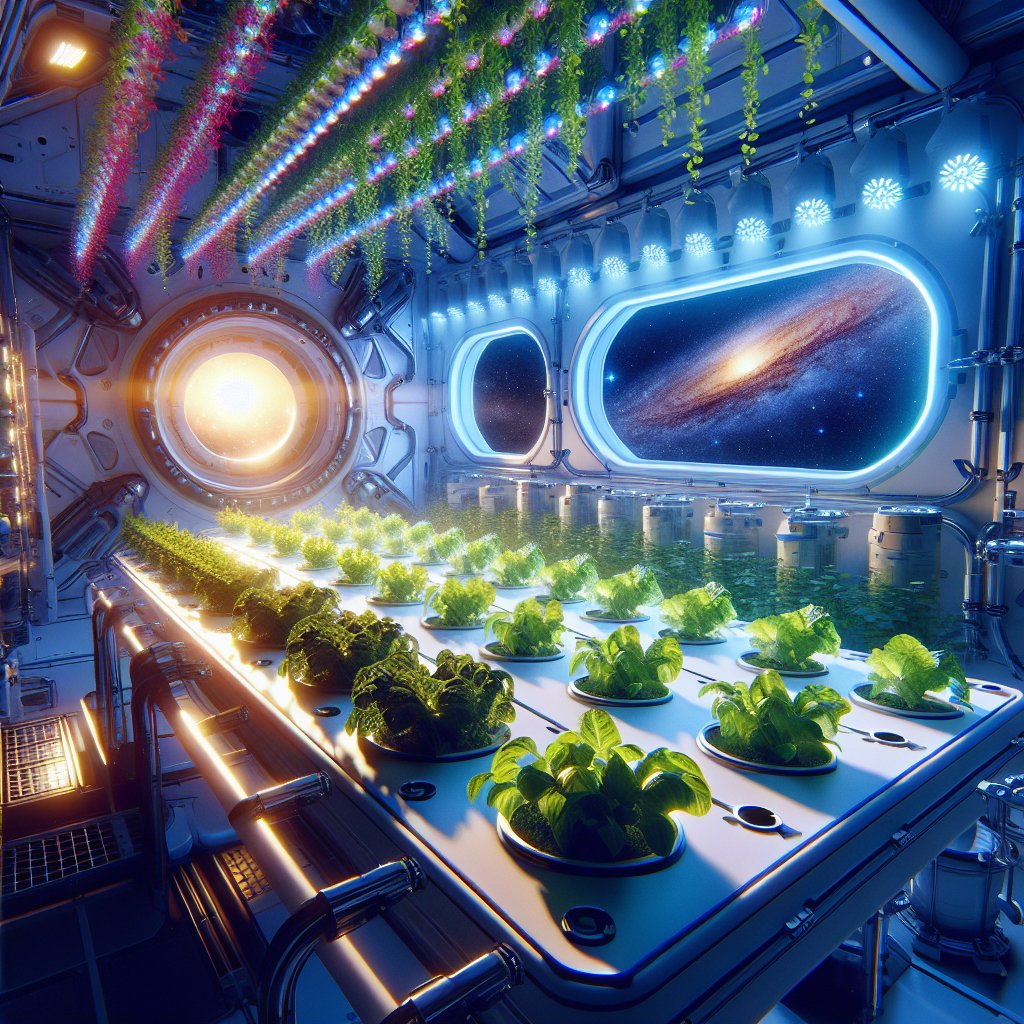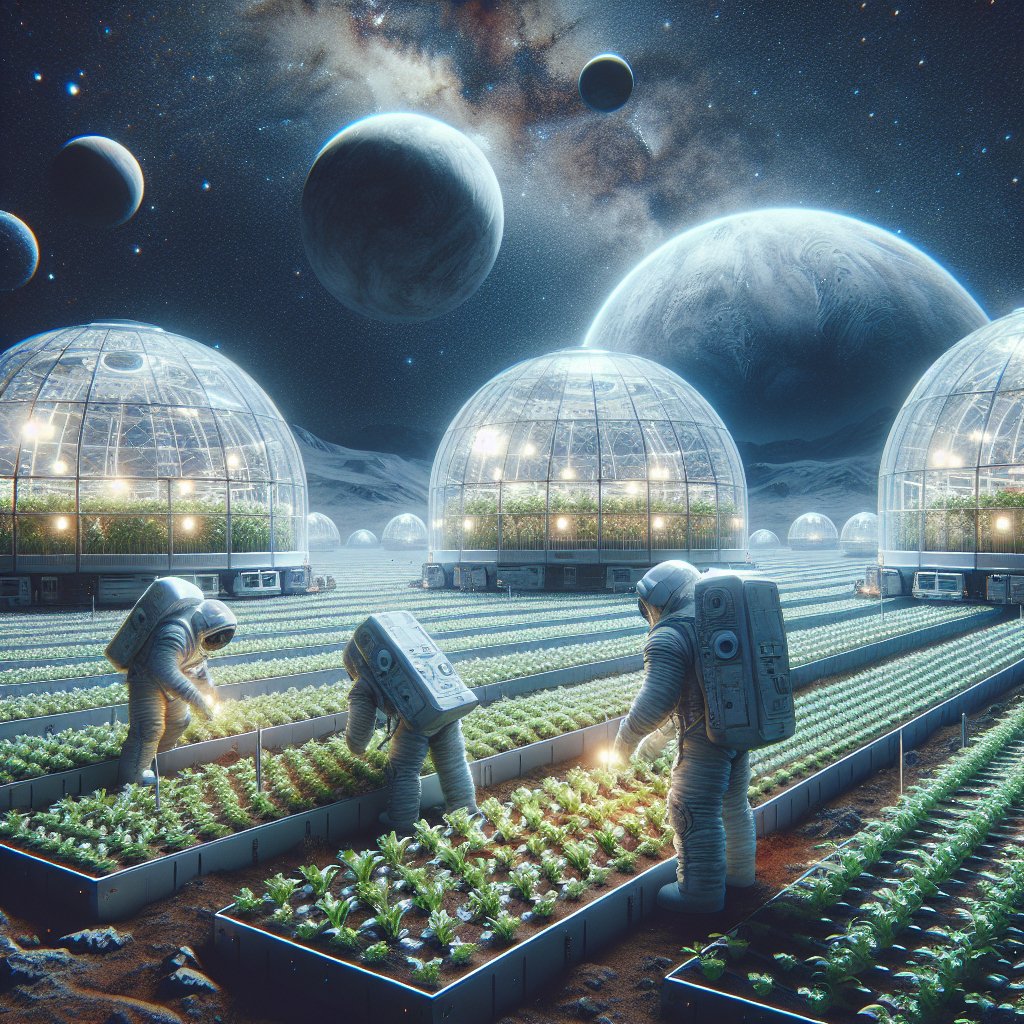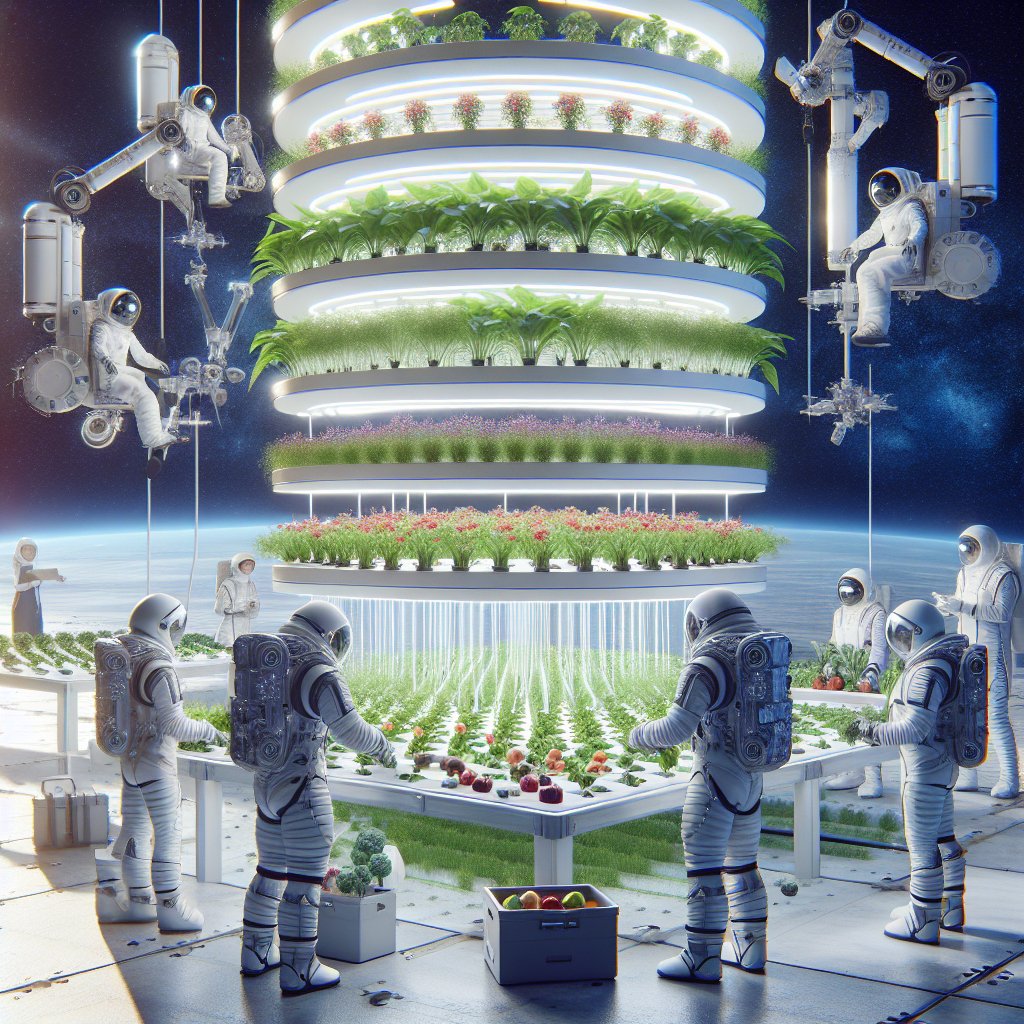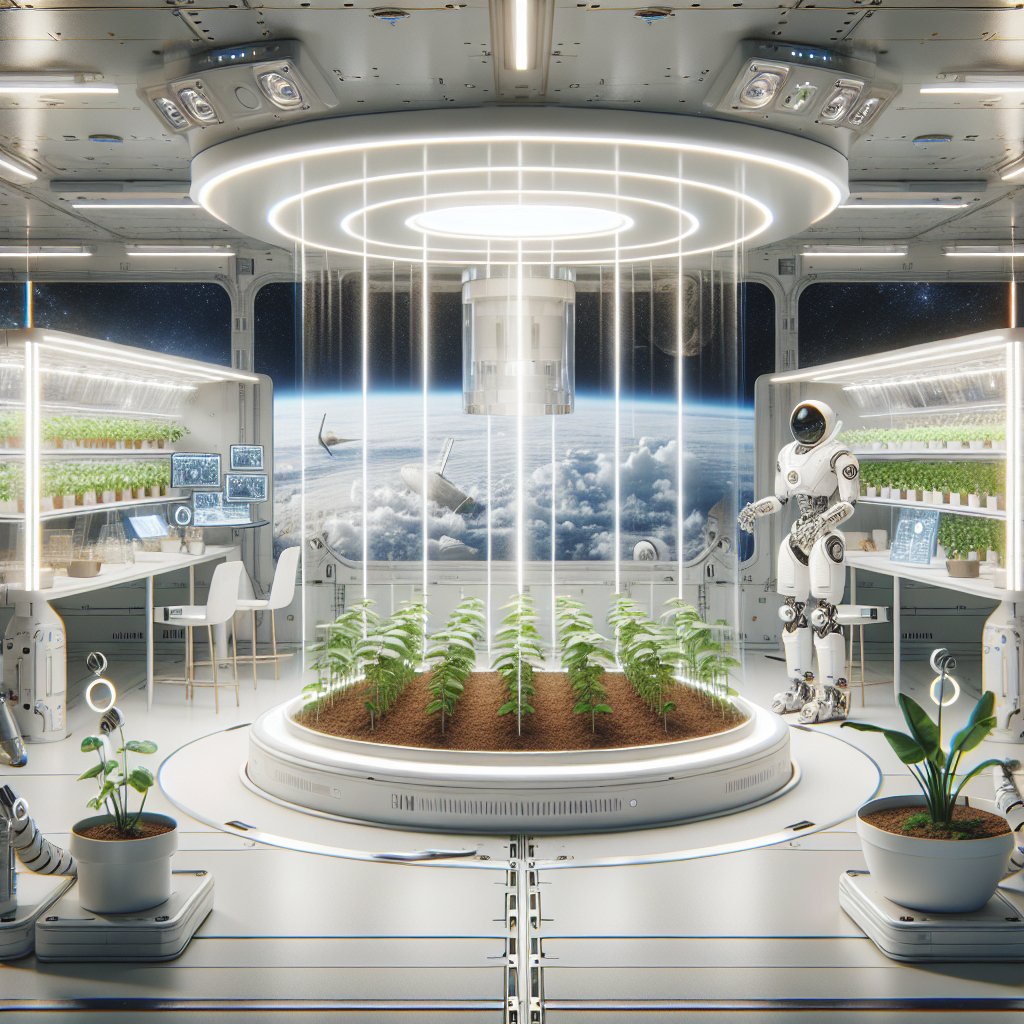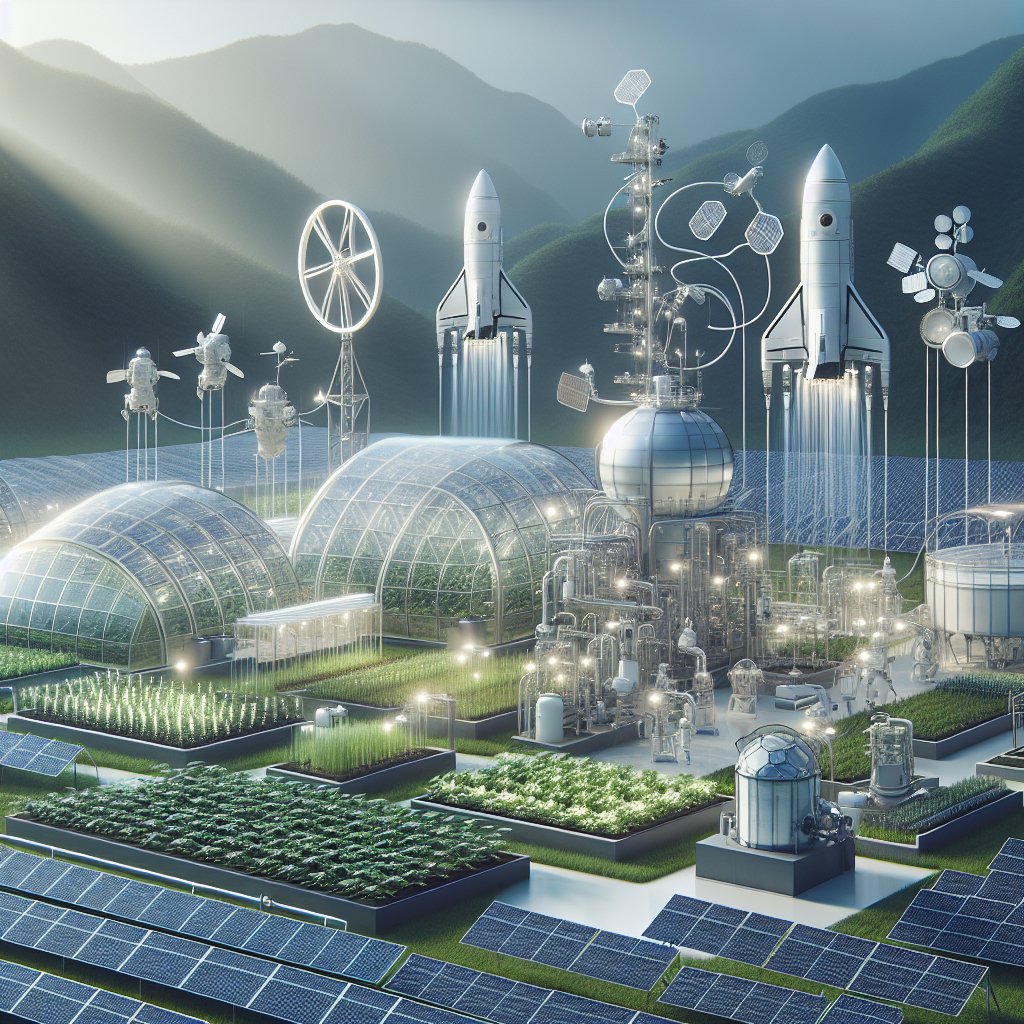The exploration of space has opened up new frontiers not only for human habitation but also for agriculture. As we look towards the stars, the need to adapt Earth-based crops for space farming becomes increasingly critical. This article delves into the challenges and innovations in cultivating crops in extraterrestrial environments, focusing on the methods and technologies that can make space farming a reality.
Understanding the Challenges of Space Farming
Farming in space presents a unique set of challenges that differ significantly from traditional agriculture on Earth. The primary obstacles include microgravity, limited resources, and the harsh environmental conditions of space. Each of these factors must be addressed to ensure the successful growth of crops beyond our planet.
Microgravity Effects on Plant Growth
One of the most significant challenges in space farming is the microgravity environment. On Earth, gravity plays a crucial role in the growth and development of plants. It affects processes such as nutrient uptake, water movement, and the orientation of plant structures. In microgravity, plants exhibit altered growth patterns, which can lead to stunted growth or abnormal development.
- Root Development: In microgravity, roots may not grow downwards as they do on Earth. Instead, they can grow in multiple directions, making it difficult for plants to anchor themselves and absorb nutrients effectively.
- Water Distribution: Water behaves differently in microgravity, forming floating globules rather than flowing downwards. This can lead to uneven moisture distribution in the growing medium, affecting plant health.
- Light Perception: Plants rely on gravity to orient themselves towards light. In space, they may struggle to determine the direction of light sources, impacting photosynthesis and overall growth.
Resource Limitations
Space missions are often limited by the availability of resources. Transporting soil, water, and nutrients from Earth is costly and impractical for long-term missions. Therefore, developing sustainable farming practices that utilize local resources is essential.
- Hydroponics and Aeroponics: These soilless farming techniques allow for efficient nutrient delivery and water usage. Hydroponics involves growing plants in nutrient-rich water, while aeroponics uses mist to deliver nutrients directly to the roots.
- Regenerative Life Support Systems: Integrating agricultural systems with life support can create a closed-loop environment where waste products from humans can be converted into nutrients for plants, thus minimizing resource waste.
- Utilizing Martian Soil: Research is ongoing into the potential of using Martian regolith as a growing medium. Studies have shown that with proper treatment, it may support plant growth, reducing the need for transporting soil from Earth.
Environmental Conditions
The environmental conditions in space, including radiation exposure, temperature fluctuations, and atmospheric pressure, pose additional challenges for crop cultivation. These factors can affect plant health and yield, necessitating innovative solutions.
- Radiation Shielding: Space crops must be protected from harmful cosmic radiation. This can be achieved through the use of specialized growing chambers or by incorporating shielding materials into the design of space habitats.
- Temperature Control: Maintaining optimal temperatures for plant growth is crucial. Advanced climate control systems will be necessary to regulate temperature and humidity levels in space farms.
- Artificial Lighting: With limited natural light in space, artificial lighting systems that mimic the sun’s spectrum will be essential for photosynthesis. LED technology is particularly promising due to its energy efficiency and ability to provide specific light wavelengths.
Innovative Solutions for Space Farming
Despite the challenges, researchers and scientists are developing innovative solutions to adapt Earth-based crops for space farming. These advancements not only aim to ensure food security for astronauts but also pave the way for future colonization of other planets.
Genetic Engineering and Crop Selection
One of the most promising approaches to adapting crops for space is through genetic engineering. By modifying the genetic makeup of plants, scientists can enhance their resilience to the unique challenges of space environments.
- Drought Resistance: Genetic modifications can create crops that require less water, making them more suitable for the limited water resources available in space.
- Shorter Growth Cycles: Developing fast-growing plant varieties can ensure a quicker turnaround for food production, which is essential for long-duration missions.
- Nutrient Density: Enhancing the nutritional content of crops can help meet the dietary needs of astronauts, ensuring they receive adequate vitamins and minerals during their missions.
Vertical Farming Techniques
Vertical farming is another innovative solution that can be adapted for space agriculture. By utilizing vertical space, crops can be grown in stacked layers, maximizing the use of limited space in spacecraft or habitats.
- Space-Efficient Designs: Vertical farms can be designed to fit within the confines of spacecraft, allowing for efficient use of space while providing a continuous supply of fresh produce.
- Automated Systems: Automation can play a crucial role in managing vertical farms, reducing the need for human intervention and ensuring optimal growing conditions.
- Integration with Hydroponics: Combining vertical farming with hydroponic systems can further enhance efficiency, allowing for high-density crop production with minimal resource use.
Research and Experiments in Space
Numerous experiments have been conducted aboard the International Space Station (ISS) to study plant growth in microgravity. These experiments provide valuable insights into how plants respond to the unique conditions of space and inform future agricultural practices.
- Veggie Experiment: NASA’s Veggie experiment has successfully grown various crops, including lettuce and radishes, in space. The results have shown that plants can grow and produce seeds in microgravity, indicating the potential for sustainable food production.
- Microgravity Investigation of Cement Solidification (MICS): This experiment explores the effects of microgravity on plant growth and development, providing data that can be used to optimize growing conditions for future space missions.
- Plant Habitat 02 (PH-02): This experiment focuses on growing plants in a controlled environment, studying the effects of different light spectra and nutrient delivery methods on plant growth.
The Future of Space Farming
As humanity sets its sights on long-term space exploration and potential colonization of other planets, the importance of developing effective space farming techniques cannot be overstated. The ability to grow food in space will be crucial for sustaining human life during extended missions and establishing permanent settlements on celestial bodies.
Potential for Mars Colonization
With Mars being a primary target for future human exploration, adapting crops for Martian conditions is a significant focus of research. The planet’s thin atmosphere, lower gravity, and extreme temperatures present unique challenges that must be overcome.
- Soil Amendments: Research into amending Martian soil with organic materials and nutrients will be essential for supporting plant growth.
- Greenhouse Structures: Designing greenhouses that can withstand Martian conditions while providing a controlled environment for crops will be a key aspect of successful farming on Mars.
- Community-Based Agriculture: As colonies grow, establishing community-based agricultural systems will be vital for food production and sustainability.
Implications for Earth Agriculture
The innovations and research conducted for space farming have the potential to benefit agriculture on Earth as well. Techniques developed for resource-efficient farming in space can be applied to address challenges such as climate change, resource scarcity, and food security on our planet.
- Hydroponics and Vertical Farming: These methods can be implemented in urban areas to produce food locally, reducing transportation costs and carbon footprints.
- Genetic Engineering: Advances in crop genetics can lead to the development of more resilient and nutritious crops, benefiting farmers and consumers alike.
- Resource Management: The focus on sustainable practices in space farming can inspire more efficient resource management strategies in terrestrial agriculture.
In conclusion, adapting Earth-based crops for space farming is a multifaceted challenge that requires innovative solutions and interdisciplinary collaboration. As we continue to explore the cosmos, the advancements made in space agriculture will not only support human life beyond Earth but also contribute to the sustainability of agriculture on our home planet.
